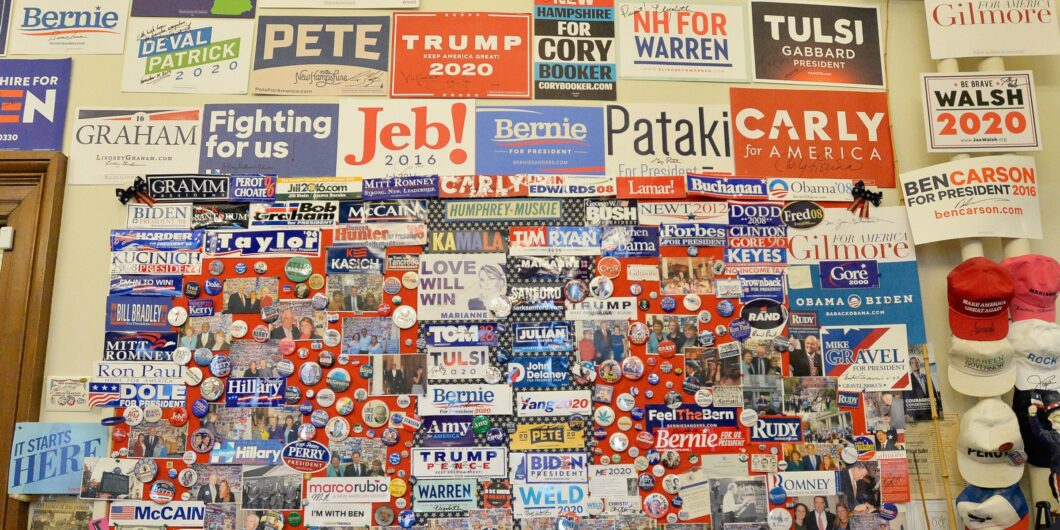A Conventional Alternative to the Primaries
Late last year, political scientist Larry Sabato compared the modern presidential primary process to one designed by “a convention of clowns.” Sabato’s critique still is prescient today, as GOP candidates struggle, almost comically, to prove why they deserve the 2024 nomination.
Sabato’s critique of the current system, however, rejects any return to the older convention model where, according to Sabato, “party bosses” selected the candidate. Sabato would benefit from reading the work of former President and Chief Justice William Howard Taft, whose defense of the older party convention bears revisiting.
Theodore Roosevelt’s hand-picked successor to the presidency, Taft became a conservative stalwart who sought to defend the Republican Party from Roosevelt’s progressive break in the 1912 election. At the time, the presidential primary system that we know today was just beginning to take form out of an older convention system.
Under the older convention model, presidential candidates worked within their party’s convention to win the nomination, rather than the drawn-out primary campaign that exists today. Before the introduction of the presidential primary, delegates would be chosen by state parties to attend the national convention, where they would then select the presidential candidate. The state convention delegates in turn were chosen by district conventions, allowing local districts the ability to send trusted individuals to represent them at the state convention. Under this older model, candidate selection was moderated through the party leaders, both at the state and national levels. The benefit to this model was that it provided a buffer between special interests and the candidates themselves—candidates couldn’t simply out-spend their opponents to the nomination. However, corruption abounded as state “bosses” often used the delegate selection to distribute favors. In response to this, a series of reforms over the twentieth century eventually led to the presidential primary process we know and loathe today.
Yet one wonders how much better we are under the current model. For example, Republican candidates have already spent a whopping combined $120.5 million on the campaign trail for the nomination as of the end of the third quarter of 2023. Presuming that these candidates don’t each split off like Theodore Roosevelt did in 1912, most of this money will effectively have been wasted on a primary that already seems to revolve around whether candidates are or are not the next Trump.
Taft himself faced a similar problem of party identity during the 1912 election. Formerly Roosvelt’s trusted protégé, Taft’s relationship with Roosevelt soured as he showed himself to be less of a progressive than Roosevelt had hoped.
A revived political party is one that helps voting coalitions form, from the smallest local convention to the largest national platform. They are truly “local organs,” to borrow a phrase from James Madison.
In the years following his defeat in the 1912 election, Taft returned to law, taking up a post to teach at Yale Law School. There, he turned out several intellectual works, including Popular Government, Liberty Under Law, and Our Chief Magistrate and His Powers. In these works, Taft offers us a defense of the older convention model. While Taft saw that corruption had crept into many nomination conventions, he still saw the model as the best way for parties to select candidates.
Taft’s conception of political parties was premised on his understanding of the American constitutional order as a whole. Perhaps the best example of this is a quote from his work Liberty Under Law, where Taft writes:
The people do rule and always have ruled in the United States. They have their will but they have it after a wholesome delay and deliberation which they have wisely forced themselves to take under the restrictions of a Constitution which, adopted by however small popular vote, they have fully approved by more than one hundred and thirty years of acquiescence. It is this voluntary self-restraint that has made their Government permanent and strong.
America’s republican order necessitates a certain degree of separation between the people and those elected even as those in public office are kept accountable through periodic elections. As Publius famously tells his readers in Federalist #10, the genius of republican government in America is that it will “refine and enlarge” the public will. In other words, the institutions of republican government are the means by which good policy can come forth through deliberation.
According to Taft, conventions provide a similar forum for cool and reasoned deliberation to occur, for
the holding of a State convention gives an opportunity for consultation among party leaders. Party leaders are not necessarily dishonest men. … [T]he great majority of them are honest and anxious for the party to succeed by serving the people well in the government with which the party may be entrusted. … [C]onference and discussion lead to wise results, and conference and discussion and deliberation with reference to party policies are not possible at the polls.
Presuming that local citizens participate in their district conventions, state conventions truly become forums where differing interests can coalesce together via deliberation over policy and candidates.
Taft’s alternative argues that local and state-based parties force party leaders to responsibly present their voters with proper candidates and policies that will appeal to the broadest base possible, thereby moderating both. This older model of party “responsibility” understands parties to act as a vehicle whereby local interests can be filtered and moderated to govern for the broader good. As Law & Liberty author Joseph Postell writes, “Parties unified narrow factions into broader governing coalitions that promoted a general good rather than specific interests, and they subordinated the ambition of individual candidates to the requirements of governing within a broader organization.” The genius behind the older convention model was that it offered voters a forum where deliberation could occur, away from the changing whims of public opinion. While America has always prided itself on democracy, having every debate under the public eye might do us more harm than good. Many Americans now have opted out of watching the presidential primary debates, seeing them as a useless waste of sound bites by individuals who have no real chance at winning the nomination.
All this also presupposes a certain understanding of the proper task of a political party: to present candidates who can win elections. But which candidate? Especially within the Republican party, each candidate presents some very different visions for the future, and this in part stems from the fact that the Republican party can’t seem to fully decide what it stands for as a party. The older convention model, freed from primaries where candidates were constantly subject to public scrutiny, allowed for deliberation and compromise between intraparty factions that in today’s world are more interested in scoring political points rather than winning an election. Were the latter actually true, Republicans would conserve their donors’ money in use for winning the general election and maybe build a party structure that could be utilized long-term.
But where does that land us today? Some suggestions for moving toward a more responsible system of presidential nomination could include moving away from presidential primaries at the state level and returning to the older conventions. Much of this is done through state laws and party bylaws—so some of this change could occur through state parties. For objectors who might decry this as an attack on Democracy, or a return to the “establishment,” a reminder that the convention system relies on strong local politics. This means a healthier and stronger civic life at the local level, as the older convention system is predicated on healthy local political parties. A strong and healthy political party in turn would mean that voters have a vehicle to express their views and have a chance for elections to reflect, to some extent, the popular will. State conventions presuppose local conventions, which in turn assumes that local citizens are engaged in local political life, whether that be county commission, school board, or so on. Perhaps the reason that Trump was seen as an “outsider” was because the parties have become so far detached from the electorate as to no longer truly be representative. The older convention model requires them to be more truly representative, and less “establishment,” presuming that citizens are involved in the ongoing process that is civic life.
Therefore, individuals interested in carrying out Taft-like reforms should use reviving their state party as a starting point—injecting life back into them so they become a strong and powerful vehicle for the electorate to express their will, both during and between elections. A revived political party is one that helps voting coalitions form, from the smallest local convention to the largest national platform. They are truly “local organs,” to borrow a phrase from James Madison, and allow the voice of citizens to be heard from a small meeting hall to the soaring ceilings of Congress. For example, by giving parties control over ballot placement, voters now have better control through the convention over who goes on the ballot. Special interests with deep pockets must now work through the party structure instead of simply primarying out an undesirable candidate who represents their local constituency rather than the latest big business. This of course is a long-term solution, but anyone intent on reviving our American institutions ought to be thinking in the long-term. The convention of clowns needs to be replaced by the convention of cool and deliberate Americans who understand that moderation and compromise are the first steps toward good policy and good candidates. Reviving an interest in Taft’s defense of conventions could be a good step in that direction.

